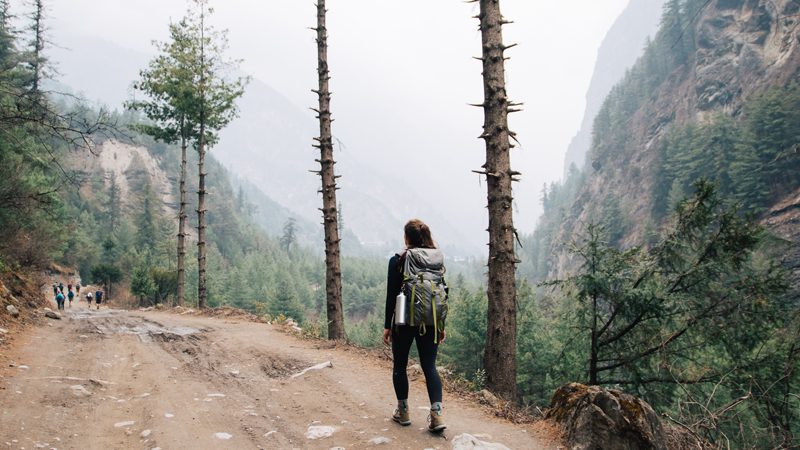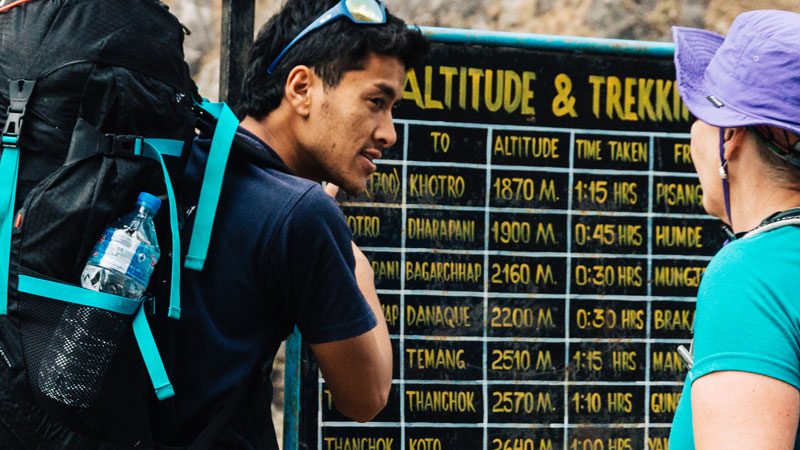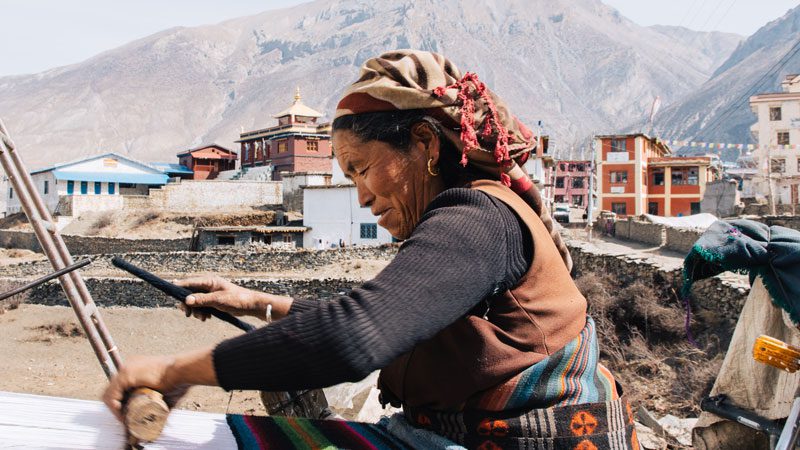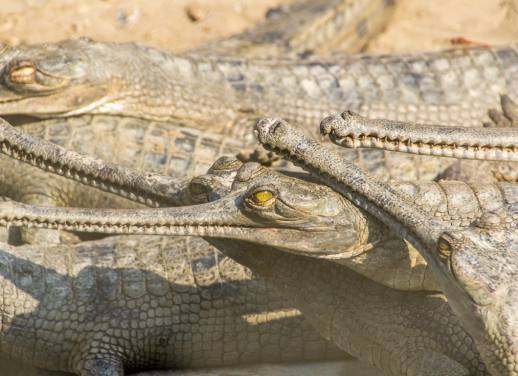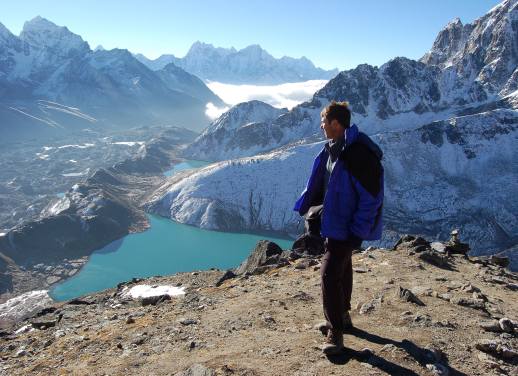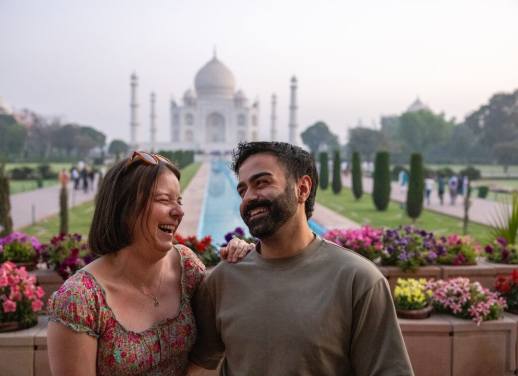“Chitwan is hot,” I’m warned at breakfast by a chatty local. I laugh nervously. “Hotter than Kathmandu?” I ask, shifting uncomfortably in my chair. I sip my cinnamon and clove-spiced tea while making a conscious effort to stop sweating. ‘Hot’ I’ve learned, is relative.
I grew up in the frigid Canadian winters of Northwestern Ontario where temperatures often dip below -40°C if you factor in wind chill (and we always factor in wind chill). My version of stifling hot is probably closer to your idea of a warm breezy day. But ‘monsoon hot’ seems to have its own special meaning for everyone. So if somebody like me – a giant baby when it comes to any heat whatsoever – can tackle Nepal during the height of monsoon season, anyone can. Here’s my handy survival guide.
Move slowly
This is a lesson I learned while climbing to the UNESCO World Heritage Site of Swayambhunath Temple. Legend has it that the hill on which the temple sits rose from beneath a lake that used to cover the Kathmandu Valley. There are two ways to get to the top, by cab or by stairs. Being a monsoon rookie, I chose the stairs…all 365 of them. Fight the urge to have your real-life Rocky Balboa moment and just go slow. Slowness will also help you avoid stepping in a pile of monkey poop, cleverly left for you in prime stepping areas by the hundreds of sacred monkeys that live around the temple.
Dress like a local
Local knowledge can often be hard to tap into while travelling for short periods of time, but this local tip is right out in the open for you to see. Leave your favourite ripped jeans at home -– they will not provide the ventilation required during Nepal’s hottest months. Pick up a few pairs of cotton pants from one of the shops that line the dusty streets of Kathmandu and wear them everywhere. You’ll thank me later. If elephant-inspired prints aren’t your thing, you can easily find plain colourful options in the capital’s bustling Thamel district. The pants are often one size fits all, but have a whole lot of stretch to them, which also means you can eat more momos at dinner. Side note: eat all of the spicy momos you can find. They’re delicious.
Embrace the sweat
The highest recorded sweat rate from somebody resting while in hot weather is 5 litres per hour, which is downright impressive. Temperatures in Chitwan can creep well into the 40°C range in June with what my internal hygrometer detected to be 100% humidity every day (note: humidity claims may or may not be accurate), so you’re going to sweat. A lot. But sweating is your body’s way of trying to keep you cool so grab an extra stick of deodorant or go au naturel style and just roll with it. Remember to drink plenty of water (a couple of litres a day minimum). But plan ahead and BYO reusable water bottle with a filter or purifier, otherwise sweating will be the least of your worries.
Look beyond Base Camp for adventure
Nepal has much more to offer than just those iconic Himalayan views of Everest everyone’s always raving about. Monsoon season is the perfect time to take a day-trip over to the towns of Patan and Bhaktapur where you can explore their buzzing markets and admire the temple sites (without the influx of high-season tourism getting in the way of your photo ops). If wildlife is what you want, a jeep jungle safari in Chitwan is the best way to spot sloth bears, one-horned rhinos, mugger crocodiles and even the elusive Bengal tigers. Trekking is still possible during monsoon season, but due to increased cloud cover you are unlikely to catch the majestic Himalayan views you’re envisioning. The Pokhara region – famous for its world-class trekking options and stunning views – receives some of the heaviest monsoon rain in all of Nepal. Rather than fight Mother Nature on this (she will win), opt for a short trekking route in the Kathmandu Valley region.
Be rain-ready
As the old saying goes, ‘when it rains, it pours’. This is especially true during monsoon season. Be prepared. Pack yourself a light-weight rain jacket, or even one of those cheap plastic ponchos and bring it everywhere. There are usually warning signs before it starts to pour – thunder, lightning, and that incredibly heavy feeling in the air that would make your grandma’s elbow act funny. When the rains come, they comes in intense and powerful bursts that will send you running for cover inside the closest local shop you can find. On the bright side, this is the perfect opportunity to practice your Nepali greetings with others trying to stay dry(ish). Namaste.
Thanks to Westcomb, Flight Network, tentree and Passion Passport for partnering with us to send 7 people to Nepal this summer in our continued effort to help bring tourism back to Nepal after the 2015 earthquake. They ventured with us through monsoon season to visit tentree’s planting site in Chitwan National Park where they’re working to combat the deforestation in Nepal. Feature image c/o The Common Wanderer.
Ready for a proper Nepal adventure? Check out our Nepal small group adventures. Or sign up for our FREE e-newsletter for more destination inspiration.

